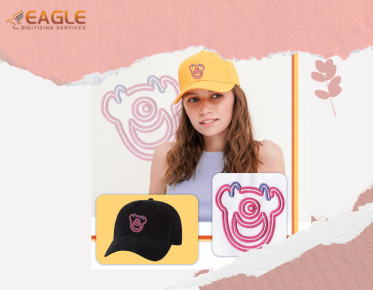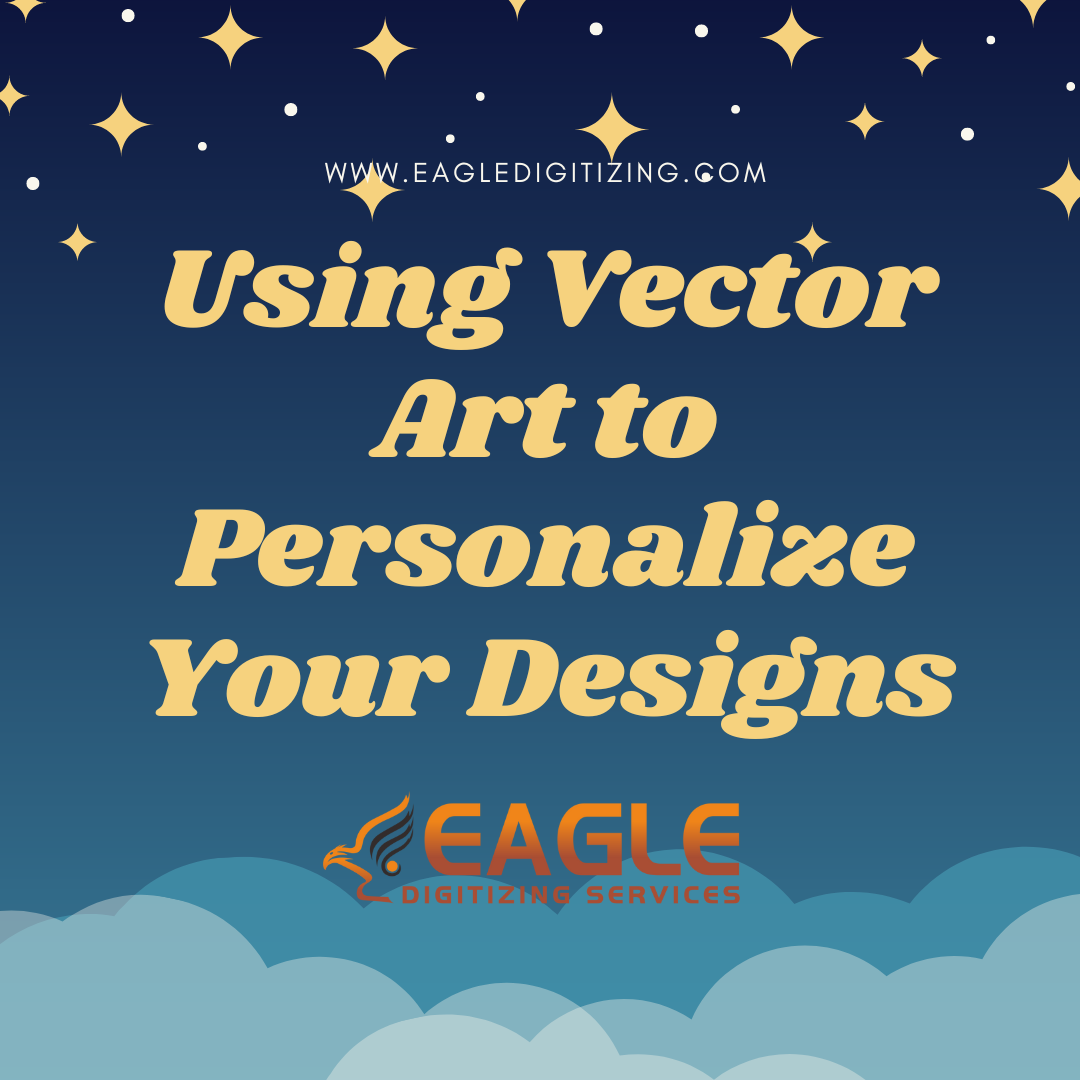How Can We Use Embroidery Designs to Boost Crafting Skills and Creativity?
Embroidery, once a traditional art form, has undergone a renaissance, becoming a dynamic medium for both seasoned crafters and beginners alike. It is not just about creating beautiful patterns on fabric; embroidery is a gateway to boosting your crafting skills and enhancing creativity. By mastering embroidery designs, crafters can expand their skill set, find new avenues of self-expression, and engage in mindful crafting. Whether you’re looking to personalize your wardrobe, add texture to your home décor, or simply explore new artistic techniques, embroidery designs offer an endless realm of possibilities. This article will explore how embroidery designs can elevate your crafting abilities and open doors to boundless creativity.
What Are Embroidery Designs and Why Are They Important?
Embroidery designs are essentially decorative patterns
or illustrations that are stitched onto fabric using thread. They range from
intricate floral motifs to simple geometric patterns. These designs are crucial
because they serve as the blueprint for the final product. Without a design,
embroidery would lose its direction, and the craft would become aimless.
Whether hand-drawn or computer-generated, these designs offer structure,
creativity, and a clear vision for the crafter to follow.
Different
Types of Embroidery Designs: From Simple to Complex
Embroidery designs vary in complexity, from basic
shapes to intricate, detailed patterns. Some designs are created with a few
simple stitches, while others may require a combination of stitches, colors,
and textures. Simple designs, such as monograms or borders, are ideal for
beginners, while complex designs, such as florals or portraits, challenge even
advanced crafters. Understanding the range of embroidery designs helps crafters
choose the right project based on their skill level and desired outcome.
How
Embroidery Designs Influence Crafting Skills and Creativity
Embroidery designs are the foundation of skill
development. By following a design, crafters learn to control their stitches,
manage thread tension, and experiment with color combinations. These designs
act as guides, pushing crafters to explore new techniques and refine their
existing skills. As your proficiency grows, the designs you work on become more
elaborate, offering greater opportunities to unleash your creativity.
The
Basics of Getting Started with Embroidery
Essential
Tools and Materials for Embroidery Beginners
For those just beginning, the right tools are
paramount. A basic embroidery kit should include embroideryhoops, needles, a variety of threads (such as cotton or silk), fabric,
and scissors. These materials are the building blocks that allow beginners to
experiment and practice. With the right tools in hand, anyone can start
stitching their way toward mastering embroidery.
Choosing
the Right Fabric for Your Embroidery Designs
The choice of fabric plays a pivotal role in how
embroidery designs turn out. Cotton and linen are popular choices for beginners
due to their ease of use and versatility. More intricate designs may require
specialized fabrics like silk or even leather. The texture and weight of the
fabric will affect how the stitches sit, so it’s essential to choose materials
that complement your design and skills.
Picking
Your First Design: Easy Projects for Skill Building
Start with simple projects to get comfortable with the
process. Small floral motifs, basic lettering, or geometric shapes are
excellent for beginners. These designs will allow you to practice basic
stitches, learn how to transfer patterns onto fabric, and build your
confidence. The beauty of embroidery is that even simple designs can be
stunning when executed with care.
Mastering
the Stitches: Building the Core Skills
Exploring
Basic Stitches: Satin, Backstitch, and French Knots
To become proficient in embroidery, it's essential to
master the fundamental stitches. The satin stitch creates smooth, flat areas of
color, while the backstitch is perfect for outlining and adding structure.
French knots offer a unique texture and are often used for adding dimension to
flowers or accents. These basic stitches serve as the foundation for more
advanced techniques and are key to gaining control over your designs.
How
to Experiment with Advanced Stitches for Greater Creativity
Once you’ve mastered the basics, it’s time to venture
into advanced stitches. Techniques like chain stitch, lazy daisy, and bullion
knots add depth, texture, and complexity to your designs. Experimenting with
these stitches opens up a world of creative possibilities, allowing you to
transform a simple design into something extraordinary.
Developing
Precision and Speed with Repeated Practice
Embroidery requires a delicate balance of precision
and speed. Repeated practice is the key to mastering both. As you work through
each design, your hand-eye coordination improves, and your stitching becomes
more consistent. With time, you’ll be able to complete designs faster without
compromising on quality.
Using
Embroidery Designs to Spark New Crafting Ideas
Letting
Your Imagination Run Wild: Translating Designs into Reality
One of the most exciting aspects of embroidery is the
ability to take a design and make it your own. Translating your ideas onto
fabric allows you to experiment with color, texture, and composition. Whether
you’re adding your personal touch to an existing design or creating something
entirely new, embroidery is a fantastic way to bring your creative visions to
life.
How
Combining Different Designs Enhances Your Creative Range
Mixing different embroidery designs can result in
unique and dynamic projects. Combining floral patterns with geometric shapes,
for example, can create a visually striking contrast. By merging various
designs, you not only challenge your skills but also expand your creative
horizons, discovering new ways to express yourself through embroidery.
Using
Embroidery to Inspire Other Forms of Crafting: Quilting, Sewing, and More
Embroidery doesn’t have to stand alone. It can serve
as a source of inspiration for other forms of crafting, such as quilting,
sewing, or knitting. Embroidered patches can be added to quilts for a personal
touch, or embroidered elements can be incorporated into garments to make them
one-of-a-kind. The versatility of embroidery
makes it a gateway to other creative endeavors.
How
Embroidery Designs Can Boost Your Problem-Solving Skills
Overcoming
Design Challenges: Finding Solutions Through Stitching
As with any creative endeavor, embroidery presents its
share of challenges. From uneven stitches to thread tangling, problem-solving
is an integral part of the process. Tackling these obstacles through stitching
not only improves your crafting skills but also sharpens your ability to think
critically and find solutions on the fly.
How
to Troubleshoot and Adjust Designs for Better Results
Sometimes, a design just doesn’t turn out as expected.
Instead of abandoning the project, use it as an opportunity to troubleshoot.
Adjusting the tension, altering the stitch pattern, or changing the color
palette can turn a mishap into a masterpiece. This adaptability is a vital
skill that applies not only to embroidery but to all creative fields.
The
Role of Patience and Focus in Creative Problem-Solving
Embroidery teaches the importance of patience and
focus. A design might require hours of work, and there will inevitably be
moments of frustration. However, overcoming these challenges fosters resilience
and deepens your problem-solving capabilities. By staying focused, you learn to
approach obstacles calmly and methodically, a skill that extends beyond
crafting.
Building
Creativity with Freehand Embroidery Designs
Exploring
Freehand Embroidery: Moving Beyond Patterns
Freehand embroidery offers the ultimate creative
freedom. By skipping the traditional patterns, you allow your instincts and
imagination to guide you. This approach encourages spontaneous design and
experimentation, resulting in pieces that are deeply personal and unique.
How
to Design Your Embroidery Templates for Custom Projects
Creating your embroidery templates is a powerful way
to customize your projects. Whether you’re designing monograms, custom
illustrations, or abstract patterns, freehand designs give you complete control
over the outcome. With a bit of practice, you’ll be able to draft and stitch
your creations with confidence.
How
Freehand Embroidery Encourages Out-of-the-Box Thinking
Freehand embroidery fosters out-of-the-box thinking by
breaking away from pre-set designs. It challenges you to think in terms of
composition, texture, and visual balance. The absence of guidelines forces you
to trust your instincts and experiment, resulting in new, creative
breakthroughs.
Integrating
Color Theory into Your Embroidery Designs
Understanding
Color Harmony in Embroidery Projects
Color plays a crucial role in embroidery, as it can
dramatically alter the mood and perception of a design. Understanding color
theory—such as complementary, analogous, and triadic color schemes—enables you
to make informed decisions about color placement and combinations.
Experimenting
with Gradient and Ombre Effects in Your Designs
Gradient and ombre effects are stunning techniques
that add depth and dimension to embroidery designs.
By carefully blending colors from light to dark, or from one hue to another,
you can create designs that feel dynamic and flowing. This technique is perfect
for floral motifs, landscapes, or abstract pieces.
How
to Use Color to Enhance Mood and Emotion in Crafting
The colors you choose can evoke specific emotions in
your embroidery. Soft pastels might create a calm and serene feel, while bold,
contrasting colors can add energy and vibrancy. By understanding how color
affects perception, you can intentionally craft pieces that express particular
moods or tell a story.
Creating Texture with Embroidery Designs: Adding Depth to Your Work
Combining
Different Stitches to Add Textural Interest
Texture is one of the defining features of embroidery.
Combining various stitches—such as long and short stitches, French knots, and
bullion knots—can add incredible texture to your design. These textured
elements create visual interest and elevate the overall appearance of the
piece.
How
to Use Layering and Embellishments to Boost Texture
Layering is a technique that involves adding multiple
layers of stitches or fabric to create depth. Combining threads of different
thicknesses, or adding beads, sequins, or fabric appliqué, can enhance the
texture and make your embroidery designs stand out.
Emphasizing
Texture for Greater Visual Impact in Designs
Texture can also create contrast within your designs.
Areas of smooth satin stitches can be contrasted with bolder, raised stitches
to create a three-dimensional effect. This interplay of texture adds visual
impact and makes your work feel more tactile and dynamic.
Embroidery is more than a decorative craft—it's a skill-building exercise, a
creative outlet, and a problem-solving challenge. By diving into embroidery
designs, crafters open themselves up to new techniques, artistic possibilities,
and a greater understanding of their creative potential. Whether a beginner or
an advanced crafter, embroidery provides endless opportunities to improve your
skills and discover your creative voice. Through constant practice,
experimentation, and learning, you’ll find that embroidery is a rewarding hobby
and a lifelong creative journey.


